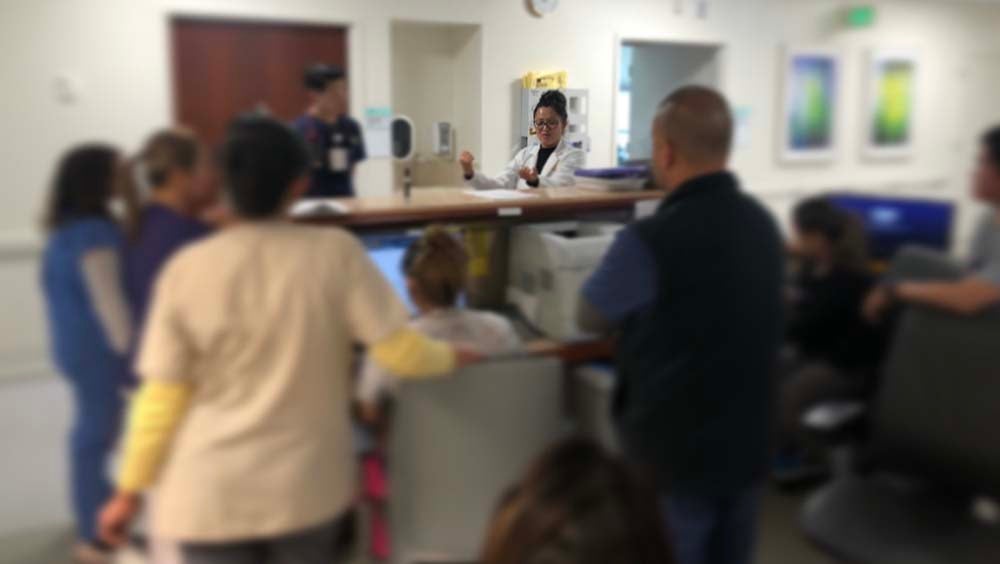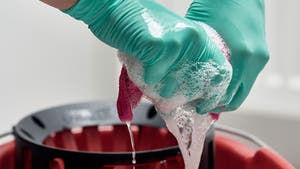Over the last few years, healthcare systems across the globe have faced a myriad of challenges as we have continued to navigate the ever-evolving COVID-19 pandemic. SARS-CoV-2 variants became more fit with immune escape, making everyone’s role in infection prevention that much more important. Critical staff shortages, high workload, stress, burnout, and unsafe clinical staff to patient care ratios led to compromises in patient safety, including healthcare-acquired infections (HAIs). It was during these challenging times that Infection Preventionists (IPs) like me had to be a strong voice in our communities and come together with others in our facilities to keep healthcare workers and patients safe.
In February 2020, due to strains on the global supply chain, it was difficult to secure personal protective equipment (PPE) and disinfection products — a worrisome scenario for all healthcare workers. Mitigating the day-to-day challenges in healthcare systems without critical supplies and tools to combat transmission of infections posed a big concern. Though PPE was donated for use by healthcare workers, the equipment was often questionable for medical grade use. In fact, as an IP, I had to review items like gowns and face shields for staff use along with the Environmental Health & Safety department and Regulatory Affairs to ensure the quality was up to standards.
During this time, it took strong collaboration to help create safer and cleaner healthcare facilities with all workers including Environmental Health Services (EVS), supply chain, senior leadership, doctors, nurses, laboratory staff, and ancillary staff working more closely with one another than ever before. It was through this collaboration and partnerships with local, state, and federal public health agencies like the Centers for Disease Control and Prevention (CDC) that healthcare facilities were able to create innovative best practices. Counties like mine that neighbored high traffic border regions such as Mexico also partnered with international clinical experts to help educate and control outbreaks where learnings crossed over.
Educational demands from IPs were high as research progressed at lightning speed during the pandemic, especially regarding disinfection products. We were responsible for sharing knowledge to help the facilities where we worked make the best product choices such as information about product kill claims, how to follow instructions for use, including contact time (the time surfaces should remain wet and uninterrupted to ensure effective disinfection) and the correct use of PPE to help prevent transmission of infections.
On top of that, the shortage in EVS workers led to delays in cleaning contaminated spaces. To meet the demands required by terminal cleaning, more clinical and ancillary staff played vital roles in disinfecting high-touch surfaces to help keep facilities cleaner and safer. It was no longer the EVS team’s sole responsibility to sanitize and disinfect, but anyone working in the facility was encouraged to help maintain a safe environment. As the pandemic continued with an endless roller coaster of surges, we felt it was our responsibility to boost the morale of those around us, especially in the COVID-19 wards.
To identify challenges simultaneously, real-time communication methods were created to escalate issues to IPs and the appropriate teams needed to deliver immediate solutions. For example, the Shared Governance and Daily Engagement System (DES) model from Lean Six Sigma helped streamline communication gaps and challenges, promoting safety and efficiency within the facility where I work. Many medical errors and potential compromises in practices were prevented through the DES communication model. Information that was escalated through the system included experience and process issues such as exposure events due to a breach of PPE use, urgent supply needs, reviewing donated PPE and knowledge gaps to prevent HAIs.
The great scientist Louis Pasteur once said: “In the fields of observation, chance favors only the prepared mind.” In today’s COVID-19 landscape, where we will continuously see seasonal community surges, collaboration across healthcare facilities remains vital in managing infection prevention. With clear communication methods, continued education, and the proper use of product implementation, we can learn to live in a sustainable new normal through best practices and strong multidisciplinary collaborations where everyone plays a role in keeping our communities safe.
Educating staff about the basics of viral transmission and how to best protect ourselves in February 2020.



